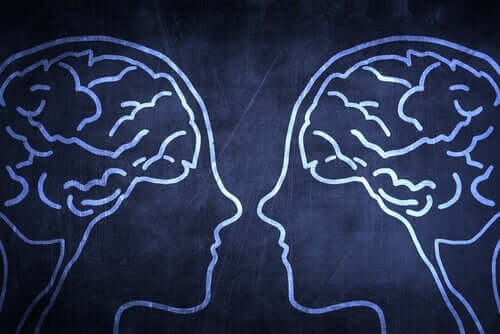The social brain is a concept created by neuroscience and refers to the innate ability to relate to others. Brain circuits have been found to be involved in both the formation of self-awareness and empathy.
The concept of social brain is based on the idea that there are several areas of the brain directly related to social relationships, this occurs in fusiform rotation, which allows us to store faces in memory, in mirror neurons, that make imitation possible, and in Von Economo neurons, which guide us to conflict, etc.
- On the other hand.
- There is the possibility to create and use the language.
- This aspect was definitive for human evolution and is directly associated with the need to connect with others.
- The social brain comprises two main systems: mirror neurons and mind theory.
- We’ll see more about this below.
“Great discoveries and improvements invariably involve the cooperation of many minds. -Alexander Graham Bell-
Mirror neurons are a special type of neurons that are activated when you observe emotional actions or expressions in other people, that is, when someone is thinking of someone else doing something, it’s like they’re doing it themselves, one way or another, humans appropriate the feelings and emotions of others.
Mirror neurons are mainly found in the frontal lobe, a region associated with movement and sensitivity to touch; also in the parietal lobe, which provides body image and sensory information; and in the insular and cingulate cortex, both related to emotions and pain.
Mirror neurons cause the so-called “contagious effect,” which is one of the fundamental mechanisms of the social brain.
As its name indicates, this effect causes the transmission of foreign emotions and feelings from one person to another, through an almost automatic mechanism, thus ending up imitating what is perceived in the environment.
The other great system that structures the social brain is the theory of the mind. It is the ability to attribute intentions or thoughts to others or sometimes even to other entities. This feature allows you to reflect on your mental state and that of others, mainly through body signals.
This perception of oneself and of others includes emotions, feelings, beliefs, etc. Finally, it allows us to predict how our behavior and that of others will face certain events, in general this capacity is not exercised deliberately, but intuitively.
Mirror neurons and mind theory are the two main components of the social brain, and their end product is empathy, which is defined as the ability to understand the other in one’s own words or, in other words, to put themselves in the shoes of others. Other.
All were born with the potential to develop empathy, but this is not always achieved. Under “normal” conditions, all human beings would have the ability to put themselves in each other’s place. However, individual experiences and education can promote unfriendly behaviors. through unfriendly behaviors, prejudices, etc.
If the human being is equipped to be sociable is not on the whim of nature, the connection with other people was decisive for the evolution of the species, language is one of the most elaborate products of this evolution, and its function is precisely to connect thoughts and feelings from one person to another.
It could be said that the human being is an impotent being, with much less strength and agility than other beings of nature and with precariously developed senses in relation to those of other animals, if he was able to successfully face an environment in which he had had no chance of survival, it was thanks to his brain; this, in turn, owes a lot to its social development.
What was true for the primitive remains true for contemporary man, even if for the moment a society with individualistic and utilitarian values prevails; it is proven in everyday life and in peoples’ history that cooperation is the most widely used way to overcome problems. and go further. This is what nature invites us to do through the social brain.

